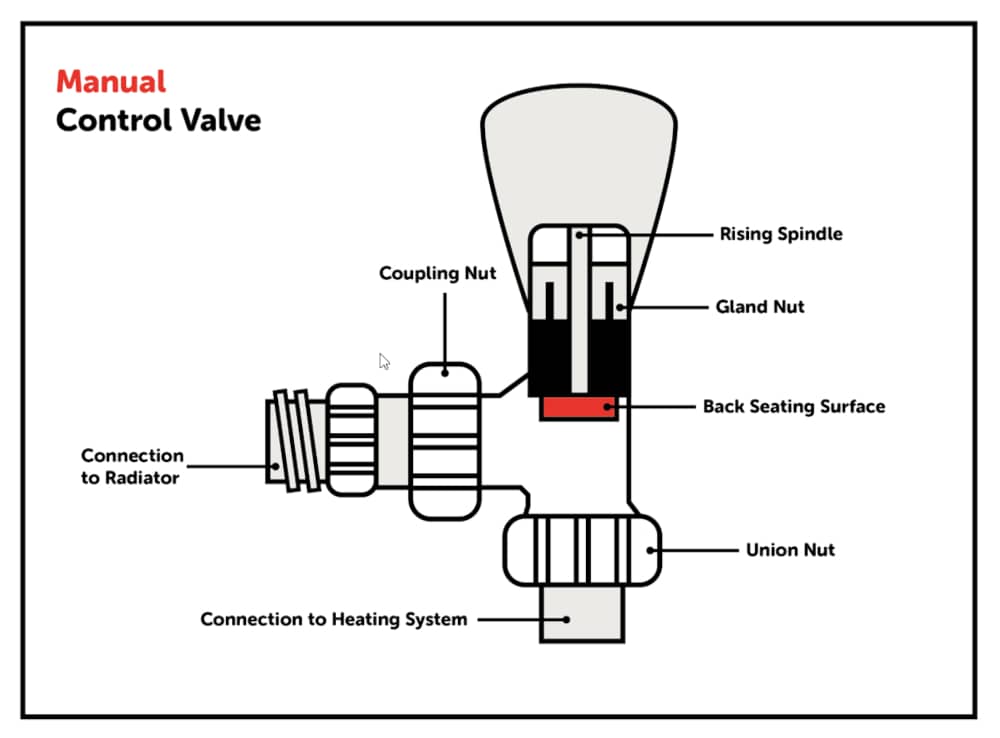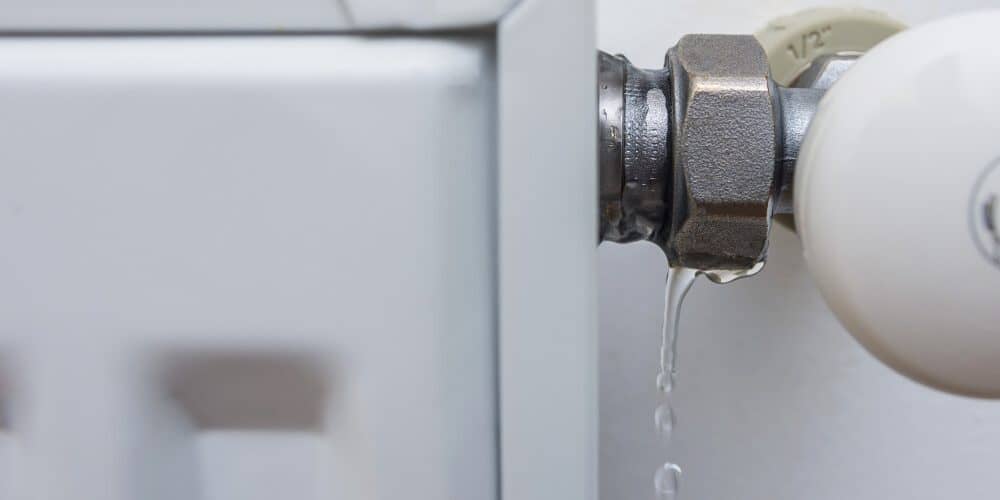Whether it is a puddle of water on the floor or a slow and steady drip seeping from the top or bottom of your radiator, a radiator leak isn’t just annoying. If left unattended, it could cause damage to the flooring and furniture within your home – not to mention the potential slip hazard it creates. Your radiator can leak from a valve, the pipework, or from the radiator itself and can cause your central heating to stop working due to loss of boiler pressure. We look at some of the most common causes of leaky radiators and their potential remedies.
Sludge and debris
Central heating relies on water to make it work and, therefore, it is inevitable that water will begin to react with the steel and cause corrosion over time if you do not take any preventative measures. The most common cause of corrosion in your radiator system is sludge, a mud-like substance that can build up in the inside of your radiators. If left untreated, sludge will lead to rusting, which will end up wearing away tiny holes in the radiator – holes that will allow the hot water flowing through your rads to trickle out.
Sludge often causes a radiator to leak from the bottom at first
No matter how modern or designer your radiators are, there will always be a certain amount of corrosion that occurs inside them over time, particularly if they are old and your heating system has not been serviced for a long time. Corrosion holes will be minute at first and you may not even notice the brownish water seeping out. The holes tend to become noticeable at the bottom of the radiator first, and it is important to jump on the problem as soon as you do notice to get the problem solved before things escalate.
Typically, if you have a hole in the bottom of your radiator, the best thing to do would be to replace the radiator altogether. For this reason, prevention is always better than cure. To reduce the impact of corrosion, make sure you regularly top up your chemical inhibitor levels. Chemical inhibitor is a liquid that can be added to the water inside your central heating system that considerably slows down the rate of corrosion that occurs between the water and metal within your heating system.
We always recommend that you have your boiler serviced by a professional Gas Safe registered plumber every 12 months, in the same way you would get an MOT on your car every year. Part of this maintenance process will be topping up the chemical inhibitor levels in your system, saving you hundreds of pounds overall.
Top tip:
Do not dry clothes on your rads! It can cause condensation and rust. If you must dry your clothes indoors, opt for an airer instead!
Faulty radiator valve
If you notice the leak is coming from one of the radiator valves, try to identify exactly where the water is seeping from. The leak could be in the place where the valve meets the pipe, it could be because the coupling nut has come loose, and sometimes it could come from the spindle. Use this handy diagram from homeserve.com to help you identify these three areas before we discuss each of these further:
 Diagram source: homeserve.com
Diagram source: homeserve.com
If the radiator valve coupling nut is the cause of the leak, this can typically be resolved by tightening the coupling or replacing the olive inside the coupling (olives sit on the pipe in between the compression nut and the main fitting body to help create a watertight seal). Often, the cause for a leaking radiator valve is due to damage to the internal spindle packing. This type of leak occurs when the valve is partly open, so give the union nut a tighten and the leak should stop once it is closed. If it doesn’t stop, you may need to swap the radiator valve for a brand new one.
Radiator spindle leak
There is a joint that connects the main body of the radiator to the radiator valve called a spindle. This can often be the source of water leaking from a radiator. In many cases this is resolved by simply tightening the gland nut, which may have come loose over time. If water is still leaking from the spindle after tightening the nut, then undo the gland nut and wrap some PTFE seal tape around and down into the spindle. You can then tighten the gland nut back up again.
Radiator gland leak
If your rad has a new valve and it is still leaking, the next thing to check is the gland which sits underneath the plastic lid of the valve. If the radiator valve is turned on and you can see water leaking from underneath the plastic cap, then the gland is definitely leaking. Simply turn off the lockshield valve, remove the plastic cap, unscrew the gland nut, and wrap PTFE tape around the valve spindle. Push some down into the body of the valve too. Screw the gland nut back on, return the plastic cap, and turn the valve back on again.
Radiator pipe joint leak
Sometimes, the pipes are the cause of radiator leaks. If you have an old central heating system, it is possible for the pipes that connect your radiator to your system to come loose and cause an unanticipated leak. If you notice water dripping from the pipe joint, give everything connected to the joint a good tighten. If that doesn’t work, you might need to get your PTFE tape out again! Remove the nut from the radiator pipe, wrap PTFE tape around where the olive meets the joint and then tighten the nut back up again.
Still suffering a leak? If your radiator leak doesn’t relate to any of the common causes above, or you have tried to fix the problem and water is still seeping out, it may be time to get an expert on the case. Our plumbing and heating experts would be delighted to resolve the problem for you. Call 020 8131 1866.

